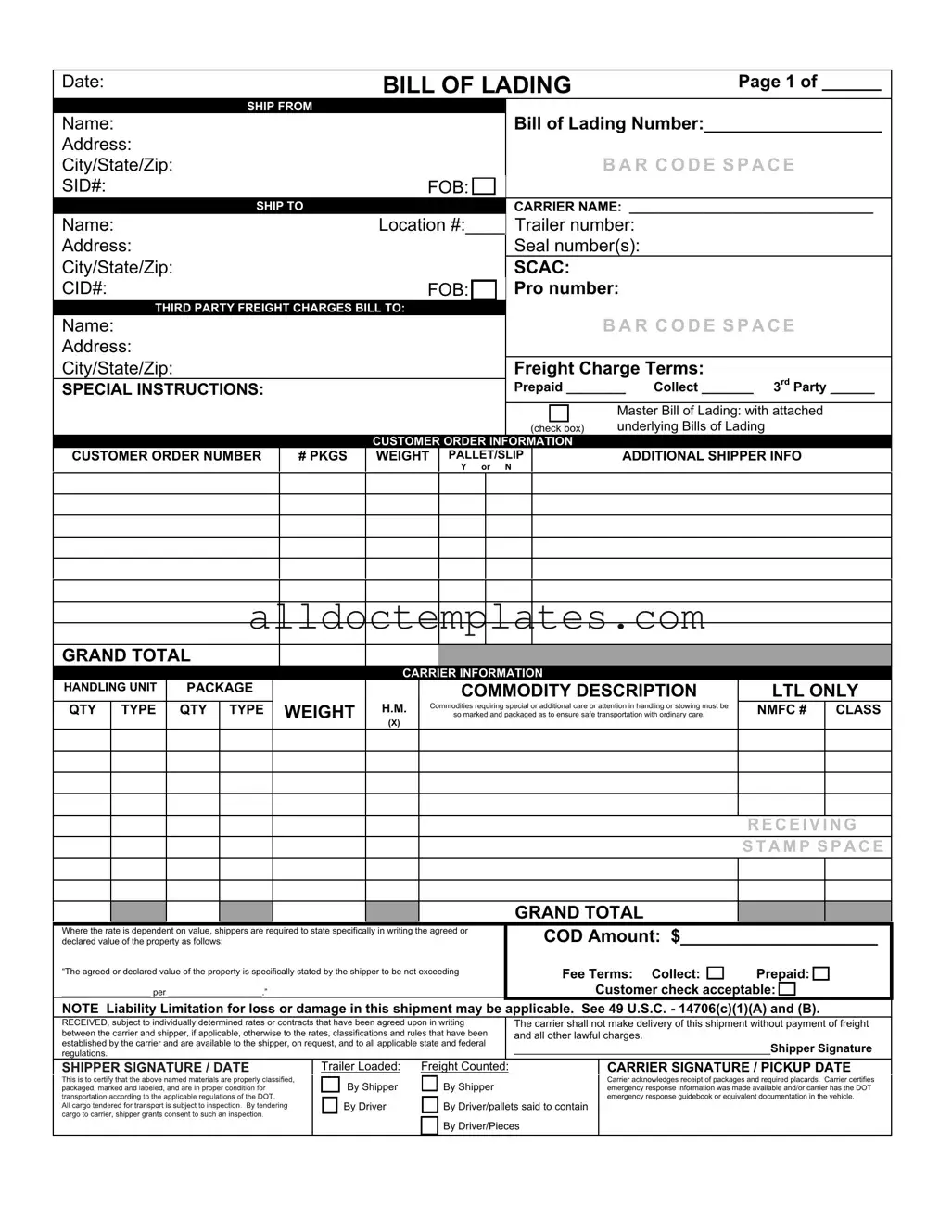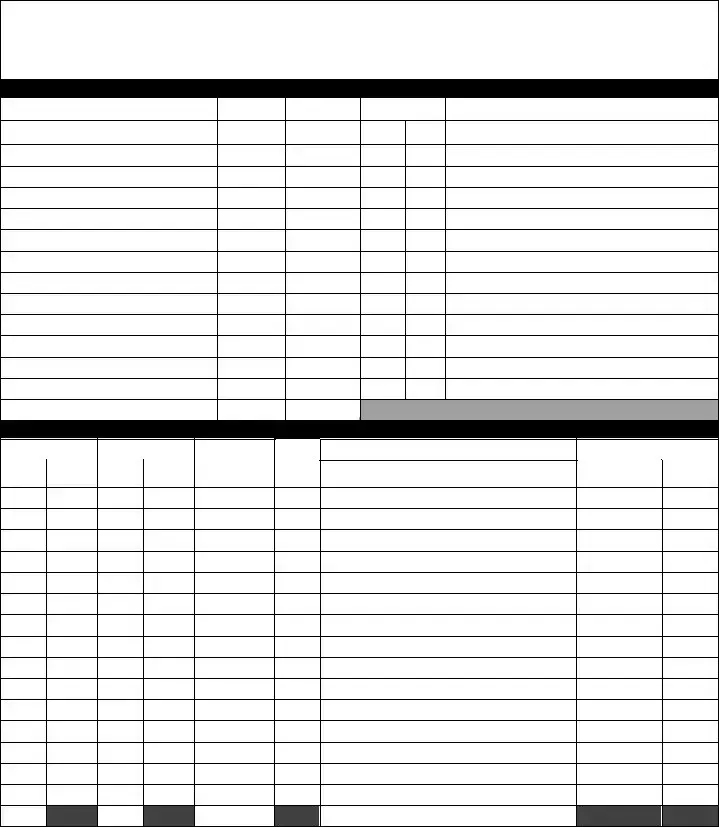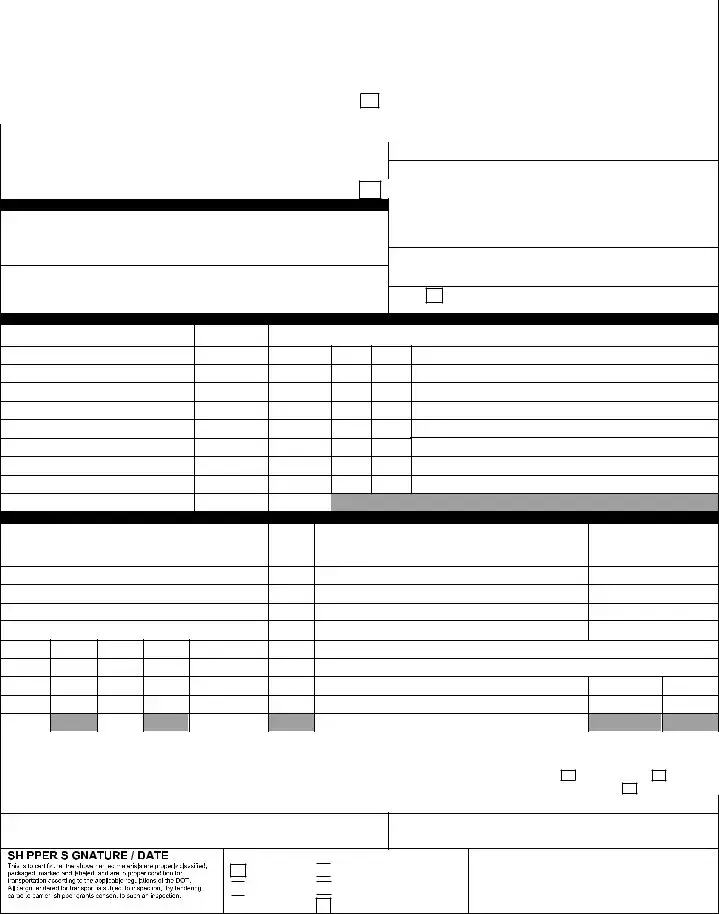Fill in a Valid Bill of Lading with a Supplement Form
The Bill of Lading with a Supplement form serves as a crucial document in the shipping and transportation industry. It outlines the terms of the shipment, including details about the goods, the parties involved, and any additional conditions. Understanding this form is essential for ensuring compliance and facilitating smooth transactions between shippers and carriers.
Get Your Form Now


 to certify that the above named materials are properly classified, packaged, marked and labeled, and are in
to certify that the above named materials are properly classified, packaged, marked and labeled, and are in proper condition for transportation according to the applicable regulations of the DOT.
proper condition for transportation according to the applicable regulations of the DOT.
 By Shipper
By Shipper
 By Driver
By Driver 
 By Driver/pallets said to contain
By Driver/pallets said to contain